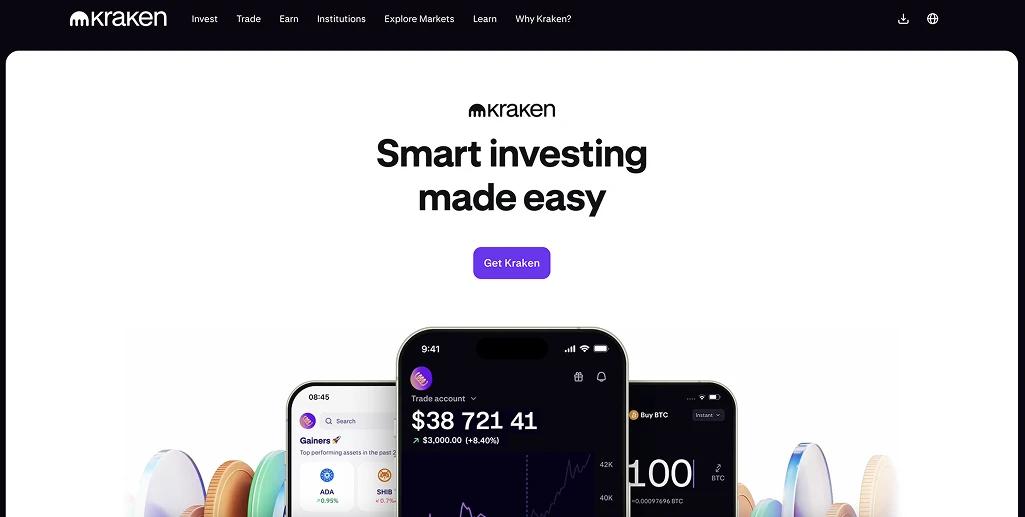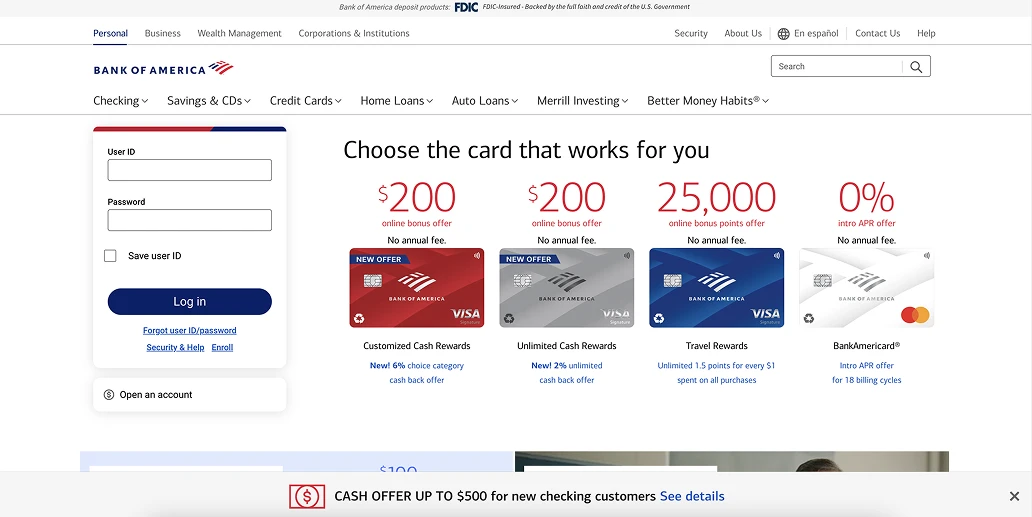- 24H Open Interest$134,807,718,659.09-3.27%
- 24h Liquidation$564,562,320.770%
- 24h long/short Ratio48.43% / 51.57%
- Fear & Greed Index23
- Bitcoin Price$101,390.9-2.02%
- Ethereum Price$3,421.66-1.52%
- Solana Price$153.09-3.87%
- XRP Price$2.34-3.6%
- 24H Open Interest$134,807,718,659.09-3.27%
- 24h Liquidation$564,562,320.770%
- 24h long/short Ratio48.43% / 51.57%
- Fear & Greed Index23
- Bitcoin Price$101,390.9-2.02%
- Ethereum Price$3,421.66-1.52%
- Solana Price$153.09-3.87%
- XRP Price$2.34-3.6%
Bank of America Crypto Policy: How to Buy Bitcoin & Digital Assets
Find out how Bank of America’s crypto policy affects customers who want to buy Bitcoin and digital assets using secure ACH and wire transfers.
Key Takeaway
- Bank of America does not provide direct crypto trading, but customers can securely buy Bitcoin and other assets by funding regulated U.S. exchanges through ACH or domestic wire.
- The bank screens card transactions tied to digital assets and restricts transfers to unlicensed or high risk platforms, keeping activity aligned with federal AML and KYC rules.
- Institutionally, Bank of America is developing a U.S. dollar backed stablecoin and exploring tokenized settlement systems as regulatory clarity expands under the GENIUS Act.
Kraken
Kraken is the most trusted and well regulated perpetuals exchange across the US, Europe, Canada, and other key markets, offering 170+ contracts with deep liquidity and low fees.
Features
Fees
Regulation
Overall Rating
Can You Buy Bitcoin and Crypto with Bank of America?
Bank of America does not provide direct access to Bitcoin or other digital assets through its banking or Merrill platforms. There are no crypto wallets, spot markets, or token custody options, and customers cannot trade digital assets through standard accounts.
Bank of America customers can still buy crypto by transferring USD to a regulated US exchange that meets federal compliance rules. Supported payment rails include ACH and domestic wire transfers, both of which are monitored under US anti-money laundering laws and require identity verification before deposits clear.
Bank of America credit cards will reject crypto purchases. The bank reviews merchant category codes and blocks transactions to unregistered or high risk platforms during fraud and compliance checks.
Bank of America Crypto Policy by Region
Bank of America follows federal guidance from the SEC, OCC, and FinCEN, and applies additional state level requirements where needed.
Most transfers to regulated US exchanges are supported, though stricter controls apply in states with dedicated licensing rules such as New York.
The table below outlines how these policies differ across key regions of the United States.
Best Exchanges for Bank of America Customers
Bank of America customers can use the regulated exchanges listed below to buy Bitcoin and other digital assets while staying within the bank’s compliance rules.
Each platform supports verified funding methods that align with Bank of America’s screening policies and US regulatory standards.
How to Buy Crypto with Bank of America (Step by Step)
1. Create an Account on a Regulated U.S. Exchange
Choose a licensed exchange that supports Bank of America transfers such as Kraken, Coinbase, Crypto.com, or Binance.US.
Register an account and complete KYC using a government issued ID and a current proof of address. U.S. exchanges require identity verification under federal AML and KYC rules before deposits are accepted.

2. Fund Your Exchange Account from Bank of America
Log into your Bank of America online banking or mobile app and send a deposit using ACH or a domestic wire transfer. Confirm you are sending USD to the exchange’s verified account details and that any reference code is correct.
ACH deposits typically settle within one to three business days. Wire transfers clear faster but may include a bank fee.
Avoid typing terms like crypto or Bitcoin in payment notes, as Bank of America screens flagged wording during fraud checks.

3. Choose Your Cryptocurrency
After your deposit clears, select the asset you want to buy. Most Bank of America customers start with liquid assets such as Bitcoin (BTC), Ethereum (ETH), or stablecoins like USDC.
Check spreads, liquidity depth, and any trading fees before placing an order, especially if you plan to trade frequently.

4. Complete the Purchase
Enter the amount you want to buy and choose your order type. A market order executes immediately, while a limit order targets a set price.
Once executed, the assets appear in your exchange wallet. For long term storage, consider moving your holdings to a secure self custody wallet such as Ledger or Trezor for added protection.
Bank of America Fees and Transfer Notes
Bank of America customers can fund regulated U.S. exchanges through standard banking channels. Costs and settlement times vary by method. The overview below covers the most common options.
- ACH Transfers (USD): Free for most accounts. Deposits to exchanges like Kraken, Coinbase, or Crypto.com settle in one to three business days. Some platforms allow limited trading before full settlement.
- Domestic Wire Transfers (USD): Outgoing wire fees range from 15 to 30 USD. Funds typically clear the same day when sent during banking hours, making this method suitable for larger deposits.
- Debit Card Purchases: Debit card transactions include processing fees charged by the exchange. Purchases are instant but may be declined if the platform is unregistered or flagged during risk checks.
- Credit Card Purchases: Credit card funding is restricted. Many exchanges do not support it due to chargeback risk. If accepted, fees are higher, and Bank of America may block the transaction during fraud review.
- Withdrawals: ACH withdrawals are generally free and settle within one to three business days. Wire withdrawals arrive faster but include standard bank fees. Large withdrawals may require additional identity confirmation on the exchange.
Bank of America’s Crypto Policy and Digital Asset Adoption
Bank of America approaches digital assets through regulated infrastructure rather than retail trading. The bank does not offer crypto wallets or spot markets to consumers, and its policy centers on compliance with federal oversight from the SEC, OCC, and FinCEN.
CEO Brian Moynihan has confirmed that Bank of America is developing a U.S. dollar-backed stablecoin. The bank has completed internal technical and compliance work but will launch only when federal and state rules are fully defined and when client demand supports the product.
The proposed stablecoin would be backed by cash and short-term U.S. Treasuries and designed for settlement and payment use cases across institutional channels. Bank of America is also part of a group of major banks studying a reserve backed digital money model that can operate on public blockchains under strict supervisory standards.
This institutional focus aligns with the GENIUS Act, which introduced the first federal framework for stablecoins in the United States. With clearer regulation in place, major banks can explore tokenized settlement systems that improve payment speed and support on chain capital markets while keeping retail crypto exposure limited.
Final Thoughts
Bank of America users can access crypto safely by funding a regulated U.S. exchange through ACH or wire, then choosing assets with strong liquidity and clear regulatory footing.
Review fees and settlement times before transferring funds, and use verified platforms that meet federal and state compliance rules.
This approach keeps your activity aligned with Bank of America’s policies while giving you controlled exposure to Bitcoin and other digital assets.
.avif)